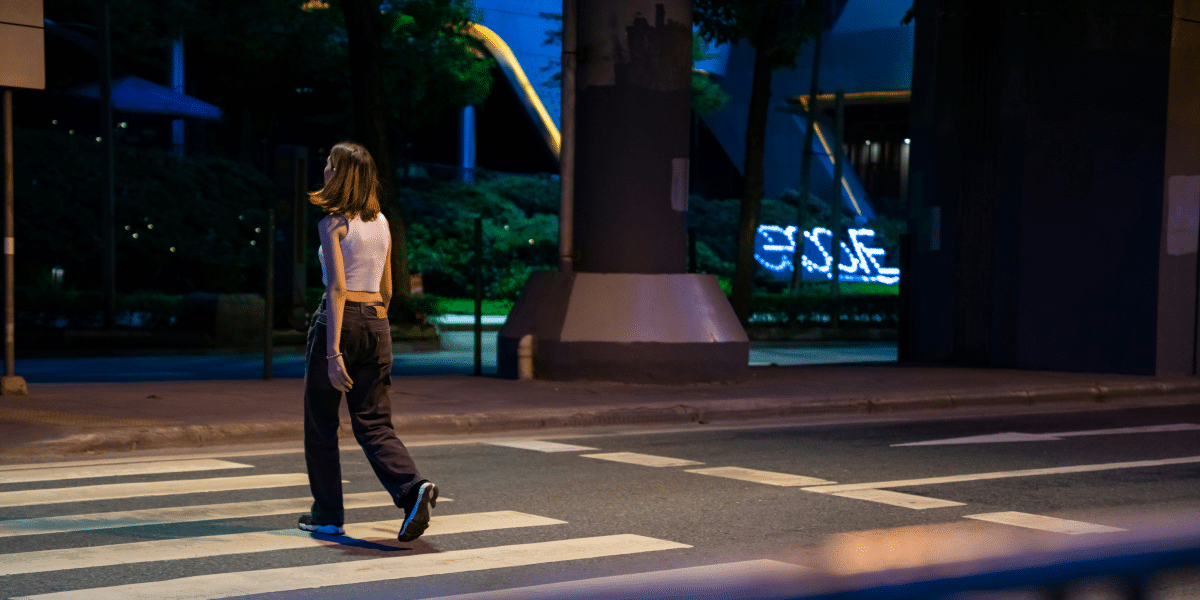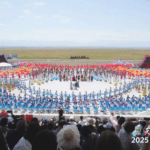Walking at night or in low-light areas can be relaxing and convenient, especially for busy schedules. However, it also comes with unique safety challenges that require additional precautions. Reduced visibility increases the risk of accidents, and unfamiliar paths may hide obstacles that could lead to trips or falls. Taking proactive measures allows you to enjoy your walk while staying safe and aware of your surroundings.
From wearing the right gear to choosing safe routes, there are several steps you can take to ensure your safety when walking in the dark. Preparation and awareness are key, as these habits can prevent accidents and make your nighttime walks safe and enjoyable. Here are some essential safety tips for walking at night or in low-light conditions.
Wearing Reflective and Bright Clothing
One of the ways to stay visible while walking at night is to wear bright, reflective clothing. Reflective materials catch and reflect light from streetlights or vehicle headlights, making it easier for drivers to see you. Bright colors like neon yellow, orange, or white stand out in low light and increase visibility.
Many sports and outdoor apparel brands offer reflective clothing or accessories designed for nighttime visibility. Reflective vests, jackets, or even small reflective patches can make a big difference in keeping you seen by others. Prioritizing visibility helps prevent accidents and enhances your safety on low-light walks.
Using a Flashlight or Headlamp
Carrying a flashlight or wearing a headlamp provides illumination for your path and increases your visibility to others. A flashlight allows you to spot any potential obstacles or hazards in your way, such as uneven pavement or debris. A headlamp, meanwhile, keeps your hands free and provides a consistent light beam in the direction you’re walking.
Choose a flashlight or headlamp with adequate brightness to illuminate your path without blinding oncoming pedestrians or vehicles. Many headlamps and flashlights come with adjustable brightness settings, allowing you to use the appropriate light level for your environment. Using these tools ensures you can see and be seen during your nighttime walk.
Choosing Well-Lit and Familiar Routes
Sticking to well-lit and familiar routes is an essential safety measure for walking at night. Well-lit streets and paths make it easier for you to see where you’re going and help others see you from a distance. Plan your route to avoid dark alleys, isolated areas, or poorly lit streets, as these places can increase safety risks.
Opting for well-lit, familiar routes is a key safety measure when walking at night. Brightly lit streets and pathways help you navigate your surroundings and increase your visibility to others, reducing the risk of accidents. Plan your route to avoid dark alleys, isolated areas, or poorly lit streets, as these places can present additional safety hazards.
Walking in familiar areas adds another layer of security, as knowing the layout helps you better anticipate and handle any unexpected obstacles. If an incident occurs due to poor lighting, reaching out to a pedestrian accident lawyer at Miller & Steele can help you understand your rights and options.
Staying Alert and Aware of Your Surroundings
Maintaining awareness of your surroundings is crucial when walking in low-light areas. Avoid distractions like looking at your phone or listening to loud music, as they can reduce your ability to notice potential hazards or people nearby. Staying alert helps you detect approaching vehicles, bicycles, or other pedestrians, allowing you to react quickly if necessary.
Regularly scanning your environment keeps you focused and enables you to spot any obstacles or individuals approaching from behind. This heightened awareness is key for staying safe, especially when visibility is reduced. Staying alert ensures you’re fully present and able to respond to anything unexpected.
Walking Against Traffic When There’s No Sidewalk
If you’re walking in an area without sidewalks, it’s safer to walk against traffic flow. Walking against traffic allows you to see oncoming vehicles, giving you the chance to react or move further off the road if needed. It also increases your visibility to drivers, especially if you’re wearing reflective gear.
Stay as close to the edge of the road as possible, and remain vigilant. Even when following this rule, walking on the road can still be risky. Walking against traffic is a simple but effective way to increase safety when sidewalks aren’t available.
Bringing a Personal Safety Device
Carrying a personal safety device, such as a whistle, pepper spray, or personal alarm, provides added security during nighttime walks. Personal safety devices can help deter potential threats or draw attention in case of an emergency. They’re easy to carry and can provide peace of mind when walking in low-light or secluded areas.
Ensure you know how to use any personal safety device you carry and keep it easily accessible. Many devices are compact and can be attached to a keychain, making them convenient to bring along. A personal safety device is a precaution that adds an extra layer of protection during nighttime walks.
Walking with a Buddy When Possible
Walking with a companion is one of the ways to enhance safety, especially at night. A buddy provides additional security, making you less vulnerable to potential threats. Walking with a friend or family member also adds to the enjoyment of the experience, as you have someone to share the walk with.
If a walking partner isn’t available, consider letting someone know your route and estimated return time. Having a check-in system can add peace of mind, ensuring someone knows where you are and can assist if needed. Walking with others reduces risks and makes your walk safer and more enjoyable.
Being Cautious at Intersections and Crosswalks
Crossing intersections and using crosswalks carefully is essential for nighttime safety. Make eye contact with drivers when possible to ensure they see you before crossing. Even if you have the right of way, proceed cautiously, as visibility at intersections is often limited, and drivers may have difficulty spotting pedestrians in low-light conditions.
Pause before crossing to check for any turning vehicles or drivers who may not have noticed you. Taking extra time at intersections reduces the risk of accidents and ensures you cross safely. Caution at crosswalks is a fundamental practice for nighttime and low-light walking.
Preparing for Changing Weather Conditions
Weather can change rapidly, especially in the evening, and it’s essential to be prepared for sudden drops in temperature or unexpected rain. Dress in layers appropriate for cooler nighttime temperatures, and carry a lightweight, weather-resistant jacket if there’s a chance of rain. Walking in uncomfortable conditions can be distracting, so dressing appropriately helps you focus on your surroundings.
Cold or wet weather can also reduce visibility, so be mindful of how conditions may impact both you and other road users. Preparing for the weather helps you stay comfortable and safe, regardless of the conditions during your nighttime walk.
Published by: Holy Minoza

















